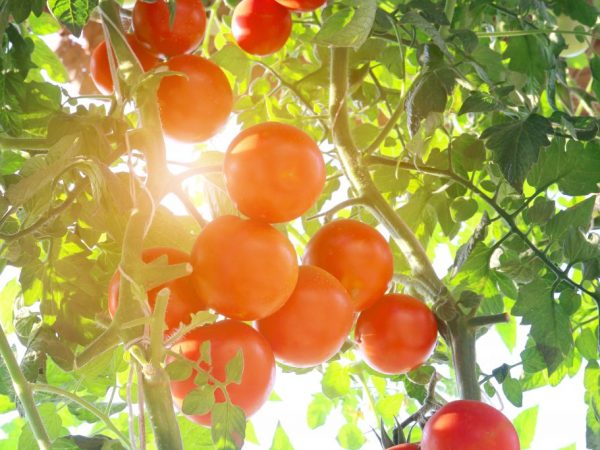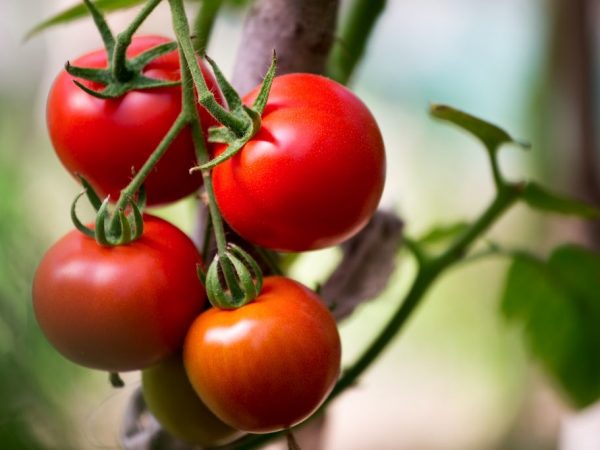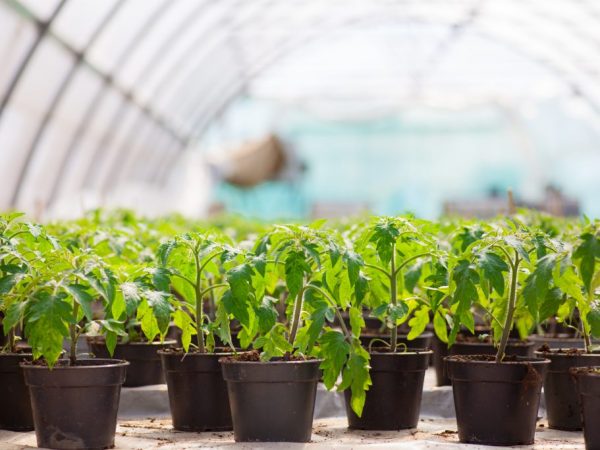Description of the tomato variety Grushovka
In order to choose the tomatoes that are ideal for you, you should plant the most interesting and liked according to the description. One of the wonderful high-yielding varieties with versatile fruits of a very unusual shape is the Grushovka tomato. Moskovskaya Grushovka tomatoes were bred about 20 years ago in Russia, as a result of long-term Siberian selection. During all this time, they show excellent productivity indicators, and the care is almost the same as most other varieties.

Description of the tomato variety Grushovka
Characteristic of Grushovka
Tomato Grushovka is a determinant, productive and mid-season variety (110-115 days before the start of fruiting). It should be borne in mind that ripening times vary depending on the region, on climatic conditions and on the various subspecies of this variety. The variety is considered the most suitable for the Kirov region of Russia. There, on vegetable farms, tomatoes are most often grown Grushovka, the official description says that such a crop is the most profitable choice for the commercial cultivation of tomatoes.
The Grushovka tomato variety has two varieties:
- Japanese (in our country, it has not acquired distribution).
- Moscow (grown everywhere).
These tomatoes are intended for cultivation in the following conditions:
- open ground (the height of the bushes is 50-60 cm);
- greenhouse (height reaches a meter and more);
- under the film.
Description of culture
The plant forms compact bushes, its leaves are medium in size, dark green in color; inflorescences are intermediate. 5-6 fruits of the same size grow on one cluster. Ripening is uniform.
The peculiarity of the Grushovka tomato is a unique characteristic of the appearance of the fruits, which is their distinctive feature. The fruits of these tomatoes of a characteristic elongated shape, wider at the bottom, resemble a pear or pepper, which gave the name to the variety. The green pear tomato in the photo looks like a ripe fruit, not a vegetable. Weight is 90-120 g, some fruits reach 250 g. Tomatoes have a very pleasant aroma, red or bright pink color, and an excellent taste with a slight sourness. The pulp is fleshy, pink, juicy, the seed content is low. They keep well and are not prone to cracking. Long-term preservation of presentation and taste during transportation makes this variety one of the leaders among tomatoes.
The use of these tomatoes is universal: they are excellent for pickling, both whole and cut into pieces; for processing for the production of tomato paste and sauces, as well as for fresh consumption in salads.
Features of growing and care

Proper care will ensure a good harvest
Before planting Grushovka tomatoes, it is recommended to feed the soil with nitrogen-containing fertilizers.Reviews of experienced gardeners recommend fertilizing the area in the fall where you plan to plant tomatoes next year by digging up the ground with the addition of roots and leaves of lupine containing nitrogen. Breeders advise growing Pears in the traditional way, using seedlings.
Caring for tomatoes Moskovskaya Grushovka includes the following:
- picking;
- watering;
- pinching;
- tying to supports;
- loosening;
- top dressing;
- weeding and weeding;
- protection against diseases and pests.
Growing seedlings
Before sowing, the seeds must be processed by placing them for 25-30 minutes in a weak solution of potassium permanganate (5-8 g of potassium permanganate per liter of water). Zircon solution can be a good alternative to potassium permanganate. As an additional treatment, a growth stimulant can be used, due to which germination is significantly increased. Then the seeds are washed in clean water and dried a little. You can germinate them by wrapping them in damp gauze for 1-2 days. Seeds are planted to a depth of 2 cm, maintaining a small distance between them so that the sprouts do not stretch out.
When germinating seeds, the substrate should be fed with a complex fertilizer, or wood ash should be added in an amount of 100-150 g per square meter.
In the future, fertilize should be every 14-20 days. For feeding, apply:
- broad spectrum chemicals;
- organic fertilizers (manure, humus);
- traditional biological methods (tops of lupine, other plants).
However, in order to reduce the harm from chemical fertilizers, it is quite possible to replace them with biological ones, which will also allow you to grow an excellent harvest of Grushovka.
Seedling care

Seedlings must be hardened
Young shoots must be planted and at the same time picking, in the phase of 2-3 leaves, which stimulates the development and rapid growth of the root system of plants. 2 weeks before planting in open ground, the seedlings need to be hardened, starting at half an hour in the air, and then leaving the plants for the whole day before planting.
Seedlings are ready for planting directly into the ground at the age of 45-55 days. When the danger of night frosts has passed, and the soil warms up to 15 degrees, you can plant seedlings on the site. No more than 5 plants are located on one square meter. It is recommended to maintain a distance between seedlings in a row of 30-40 cm, and between rows - 70 cm. When watering, care must be taken using warm water. It should be watered gently at the root so that water does not fall on the leaves. It is best to plant tomatoes at sunset or in cloudy weather so that the tender sprouts do not burn out in the sun.
Immediately after planting the seedlings in the ground, it is advisable to install supports for the sprouts and tie the plants to them. You should also carry out pinching in order to properly form the bushes. The ideal option, which ultimately gives a very high yield and large fruits, is the formation of a bush consisting of 3-4 stems.
Protecting Pears from disease
Unfortunately, the tomato variety in question does not show sufficient resistance to diseases and pests, and therefore requires special attention.
Diseases of Moscow Grushovka:
Macrosporiasis (or brown spot)
This disease is triggered by fungi that affect the stem and leaves. High humidity only contributes to the rapid development of fungi. The best way to fight is antifungal solutions that include copper (Barrier).
Viral mosaic
Leaves, stem and fruit are covered with spots resembling marble. In this case, the only way out is to destroy the affected plants. The soil around the roots of a diseased plant should also be removed. Only this way can stop the spread of the disease to other bushes.
Top rot
Only tomatoes are susceptible to this disease. The fruits of the diseased plant are covered with brown spots and dents on the tops.Top rot is most susceptible to damage to tomatoes growing on soil poor in calcium.
As a way to prevent this disease, it is recommended to add crushed egg shells to the soil before planting seedlings, carefully distributing it in the holes and mixing it with the soil.
Conclusion
This variety is quite demanding in terms of care, but the characteristics of its cultivation are comparable to the conditions of most varieties of this crop. However, all the efforts made to grow this variety will not be in vain, and you will be rewarded with an excellent harvest of amazingly tasty and beautiful tomatoes. Tomatoes of the Moskovskaya Grushovka variety can be recommended for small farms and for summer cottages, where both a garden and a vegetable garden are located.


